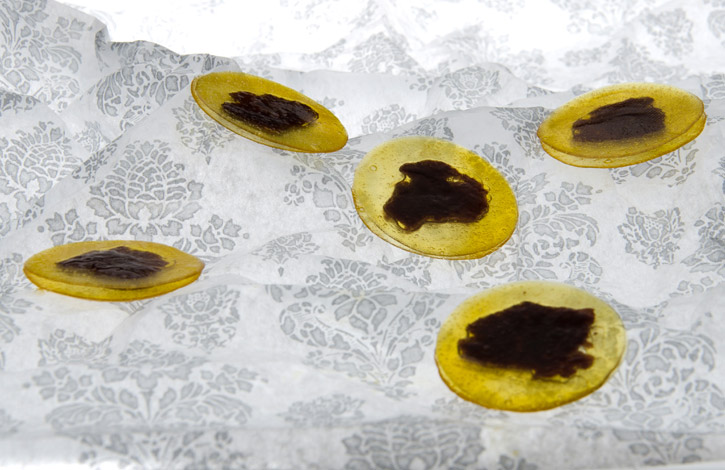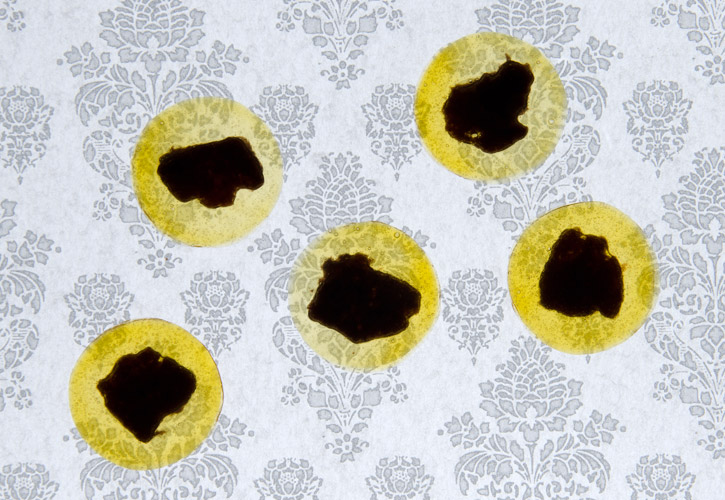Mango and Black Olive Discs
Chef Ferran Adria delights us with a great pairing of mango and black olive in interesting textures. Using what he calls the croquanter technique, he makes a crunchy mango disc by dehydrating a mixture of mango puree and sugars. The discs are used to form a "sandwich" filled with a smooth and intense emulsion of black olive water and oil.

Ingredients
Dehydrated Mango Crisps
- 150g (5.3 oz) mango puree
- 25g (0.9 oz) Isomalt
- 5g (0.18 oz) glucose
- 45g (1.6 oz) icing (confectioner's) sugar
Black Olive Water and Oil
- 400g black olives
Black Olive Emulsion
- 50 g black olive water previously prepared
- ½ gelatin leaf, rehydrated in cold water
- 0.5 g sucrose ester
- 50 g black olive fat, previously prepared
- 0.5 g glycerin flakes
Preparation
Dehydrated Mango Crisps
1- Blend the mango puree, Isomalt, glucose and half the icing (confectioner's) sugar in a Thermomix at 80 °C (175 °F) for 5 minutes. If you don't have a Thermomix heat the ingredients in a pot over medium heat while blending with an immersion blender.
2- Strain the mixture and add the rest of the sugar, stirring with a whisk.
3- Place a stencil with circular shapes on silicon mat that fits your dehydrator. Secure it to the counter using some scotch tape.
4- Using a spatula, spread the mango mix over the stencil removing any excess.
5- Carefully lift the stencil.
6- Place the silicon mat in the dehydrator at 54 °C (130 °F) and wait for 48 hours.
8- Use immediately or store in a sealed container with desiccant packets.

Black Olive water and oil
1- Stone (pit) the olives and purée them in a blender.
2- Squeeze the puree through a Superbag or using a fine sieve covered with a few layers of cheesecloth to obtain as much liquid as possible.
3- Pour the liquid into a measuring cup and store in a cool, dry place.
4- After 12 hours, the fat will have risen to the top. Separate the fat from the liquid.
5- Refrigerate both parts.
Black Olive Emulsion
1- Dissolve the gelatin with a third of the black olive water over a medium heat, then add the remaining water.
2- Add the sucrose ester and process with a hand-held blender.
3- At the same time, dissolve the glycerin flakes with the black olive fat at around 50 °C (120 °F).
4- Gradually add the fat to the black olive water while processing with the hand-held blender.
5- Refrigerate for 2 hours.
6- Once it has set, make 10 0.2g portions.
Assemble and Serve
1- Place 10 mango discs on serving plate and put 0.2g of olive emulsion on top of each disc.
2- Place another mango disc on top of each one. Serve immediately.




 (1 votes, average: 4.00)
(1 votes, average: 4.00)
